

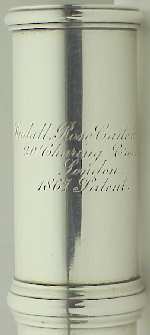
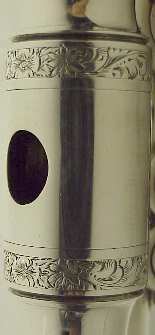
The previous owner found this
flute,
black with tarnish, in a vintage instrument shop in Philadelphia.
During restoration, this beautiful silver instrument slowly emerged.

 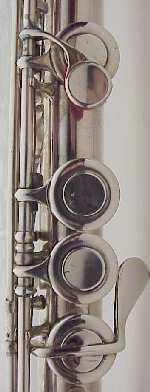 LEFT:
Note the "backward" layout of the non-Briccialdi thumb
keys.
Closing the upper key only give B natural, adding the lower gives Bb,
opposite
but more logical than the standard Boehm flute. The 1867 system
fingering
also sounds an open D without added trill keys. LEFT:
Note the "backward" layout of the non-Briccialdi thumb
keys.
Closing the upper key only give B natural, adding the lower gives Bb,
opposite
but more logical than the standard Boehm flute. The 1867 system
fingering
also sounds an open D without added trill keys. RIGHT: Note the Dorus (normally open) G#. All left hand fingers down gives a G, lifting the little finger gives G# -- again, backward from the modern fingering, yet again, more logical in that the more fingers down, the lower the note. This system also allows a truer E3 to sound without added mechanism of split-E or high E facilitator. |
 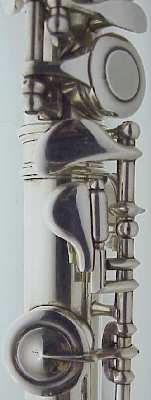  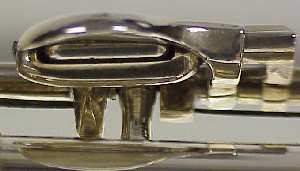 RIGHT: The logic of the open G# doesn't carry through to include an open D# -- too many objections from the old fogies, no doubt. Note the elegant, flowing R4 touches for D# and C#. ABOVE: The close-up "clamshell" shows the cradle supporting the low C roller hidden beneath the C# touch. |
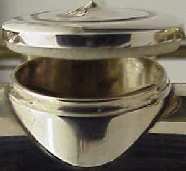 The
1867 Patent flute is in some respects superior to the Boehm flute that
has become standardized today. A major drawback is the increased
complexity of the mechanism. However, once it is properly set up,
it is very robust and stable, requiring minimal adjustment -- almost,
but
not quite, exactly unlike the Windows 98 operating system.
The
1867 Patent flute is in some respects superior to the Boehm flute that
has become standardized today. A major drawback is the increased
complexity of the mechanism. However, once it is properly set up,
it is very robust and stable, requiring minimal adjustment -- almost,
but
not quite, exactly unlike the Windows 98 operating system.
Images © J.
W. Sallenger